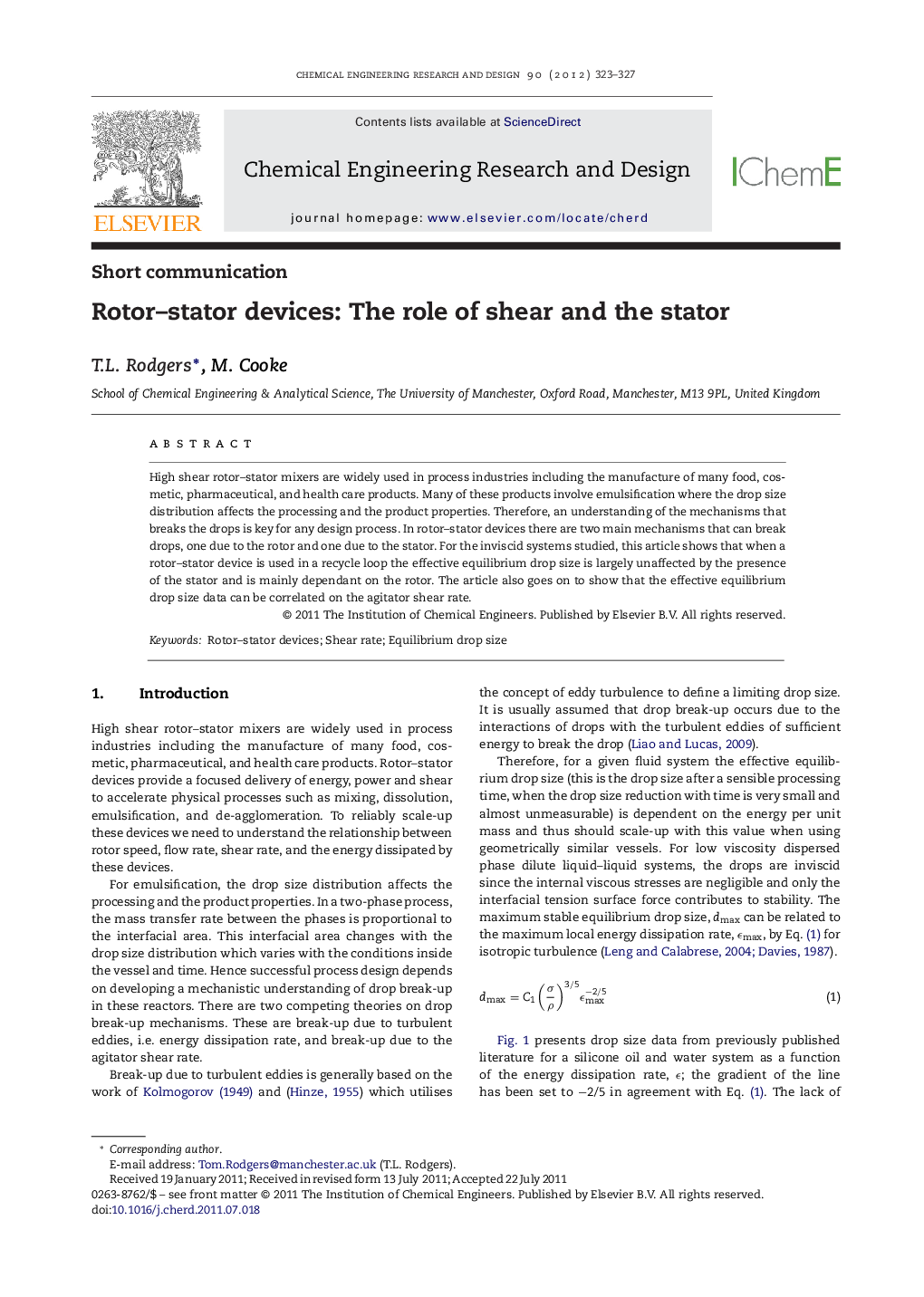| Article ID | Journal | Published Year | Pages | File Type |
|---|---|---|---|---|
| 621986 | Chemical Engineering Research and Design | 2012 | 5 Pages |
High shear rotor–stator mixers are widely used in process industries including the manufacture of many food, cosmetic, pharmaceutical, and health care products. Many of these products involve emulsification where the drop size distribution affects the processing and the product properties. Therefore, an understanding of the mechanisms that breaks the drops is key for any design process. In rotor–stator devices there are two main mechanisms that can break drops, one due to the rotor and one due to the stator. For the inviscid systems studied, this article shows that when a rotor–stator device is used in a recycle loop the effective equilibrium drop size is largely unaffected by the presence of the stator and is mainly dependant on the rotor. The article also goes on to show that the effective equilibrium drop size data can be correlated on the agitator shear rate.
► Drop break-up by energy dissipation and shear are discussed. ► There is still debate on which of these is the correct mechanism. ► Single pass and equilibrium drop size experiments are carried out on an in line rotor–stator device. ► Little difference in drop size is seen with and without the stator for the equilibrium data. ► Drop size data for a large range of agitators is shown to correlate with a new proposed representative shear rate but not with energy dissipation.
